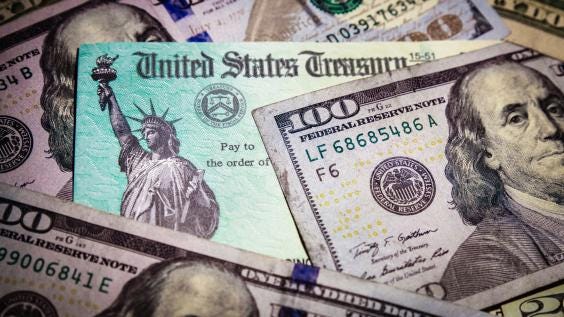My writing has been sparse of late, and my ability to publish formally at publications other than this blog has suffered greatly from sheer lack of time. (My time is almost all consumed by music and raising a family.) So I am very lucky that the RTSG collective has agreed to publish something I wrote several months ago, but which retains its relevance today: an account of the history and future of the global hegemony of the U.S. dollar, as well as the prospects of international dedollarization. This is heavier economic theory than I’m accustomed to publishing on my personal blog, so I’m very pleased to have it published at a site that hosts this sort of research.
The article attempts to illustrate how the U.S. wields the dollar, by way of its status as international reserve currency, to exert control over the whole world economy. The U.S. occupies the position of the world’s largest creditor and debtor nation, and it skillfully — and tyrannically — employs both its creditor and its debtor positions to its own advantage. Whereas previously these advantages were linked to the U.S.’s industrial prowess, since 1971 the U.S. has steadily deindusttialized, moving its productive labor to foreign countries like China. This effectively split the globe into separate blocs, of which the U.S. bloc now plays the function of the traditional capitalist class, as defined by Karl Marx, while China and the other countries that depend on American investment now occupy the position of the global proletariat. As I have written elsewhere as well, the Huntington-esque “clash of civilizations” that is now bursting through the cracks of the liberal world order is in reality nothing other than the classical Marxist class struggle, transposed to a global and inter-civilizational scale. The dominance and tyranny of the dollar plays a central role in this struggle, as does the effort by China and its followers among the BRICS nations to promote international dedollarization. To get a sense of what the article is about, here is an excerpt:
The United States has ensured that it need not pay back its debts to creditor nations around the world for a very long time, and last year’s agreement between Congress and the Biden Administration to suspend the debt ceiling only extended the life of this rigged system indefinitely. Partisan disputes in the U.S. over the exigencies of deficit spending are a distraction from the evident fact that the U.S. cannot give up its debtor status if it is to maintain its global hegemony, for its debt is precisely how it finances the immense sums of spending that go into building that hegemony. And it so happens that the preservation and extension of that hegemony is supported by the entire ruling class of America, regardless of their party affiliation or their moralistic talking points about the national debt.
Nonetheless, the international dollar system on which America’s hegemonic debtor status rests cannot reasonably be expected to last forever. In a highly financialized economy, it may appear that this can go on to infinity—but the real economy is not so free of limitations. For one thing, the asymmetry of dollar hegemony has been put into sharp relief by the events following Russia’s Special Military Operation in Ukraine, in February, 2022, when Western nations around the world, led of course by the United States, responded to President Vladimir Putin’s invasion by imposing heavy sanctions on Russian oil. This did not work out very much to the advantage of anybody involved, including many European countries among the U.S.’s closest allies and trade partners, and instead contributed to a global rise in energy prices.
It is increasingly evident to a growing majority of nations around the world that their subjection to the international dollar system has not worked out to their advantage. On the contrary, nations in the West that are characterized by high levels of consumption find themselves the victims of inflationary prices due to sanctions on Russian oil, or as the downstream effect of U.S. monetary policy. For nations that hold large debts to the U.S. or to U.S.-dominated multilateral institutions such as the IMF or the World Bank, the dollar system has made it increasingly difficult for them to pursue their own economic development and modernization. Owing large debts with extremely high interest, combined with the difficulty of obtaining loans without agreeing to restrictive environmental policies, has prevented these countries from investing in their domestic industrial bases, thus contributing to the immiseration of their poorer and working populations. This is undoubtedly fueling rising levels of resentment towards the U.S.-based architects of this usurious system.
Meanwhile, exporting nations that have been allowed some measure of internal development have nonetheless found themselves vulnerable to punitive trade restrictions imposed by the increasingly belligerent and authoritarian government of the United States. One of these countries is Russia, which—despite its precipitous economic decline since the fall of the Soviet Union—has acquired a position of key geo-economic importance due to its production of oil for export. Another such country is China, the single largest exporting nation in the world—and therefore one of the largest creditors of dollars to the U.S. government, holding one of the largest reserves of U.S. treasury bonds in the world (second only to Japan). China’s economy also suffered a round of punitive economic sanctions during the presidency of Donald Trump. President Biden has only extended and hardened his predecessor’s methods, in an ongoing attempt to push China into isolation from the global market. Accordingly, it is no surprise that Chinese leaders are wary of America’s increasingly aggressive approach, and are therefore eager to escape the rigid confines of the dollar empire.




